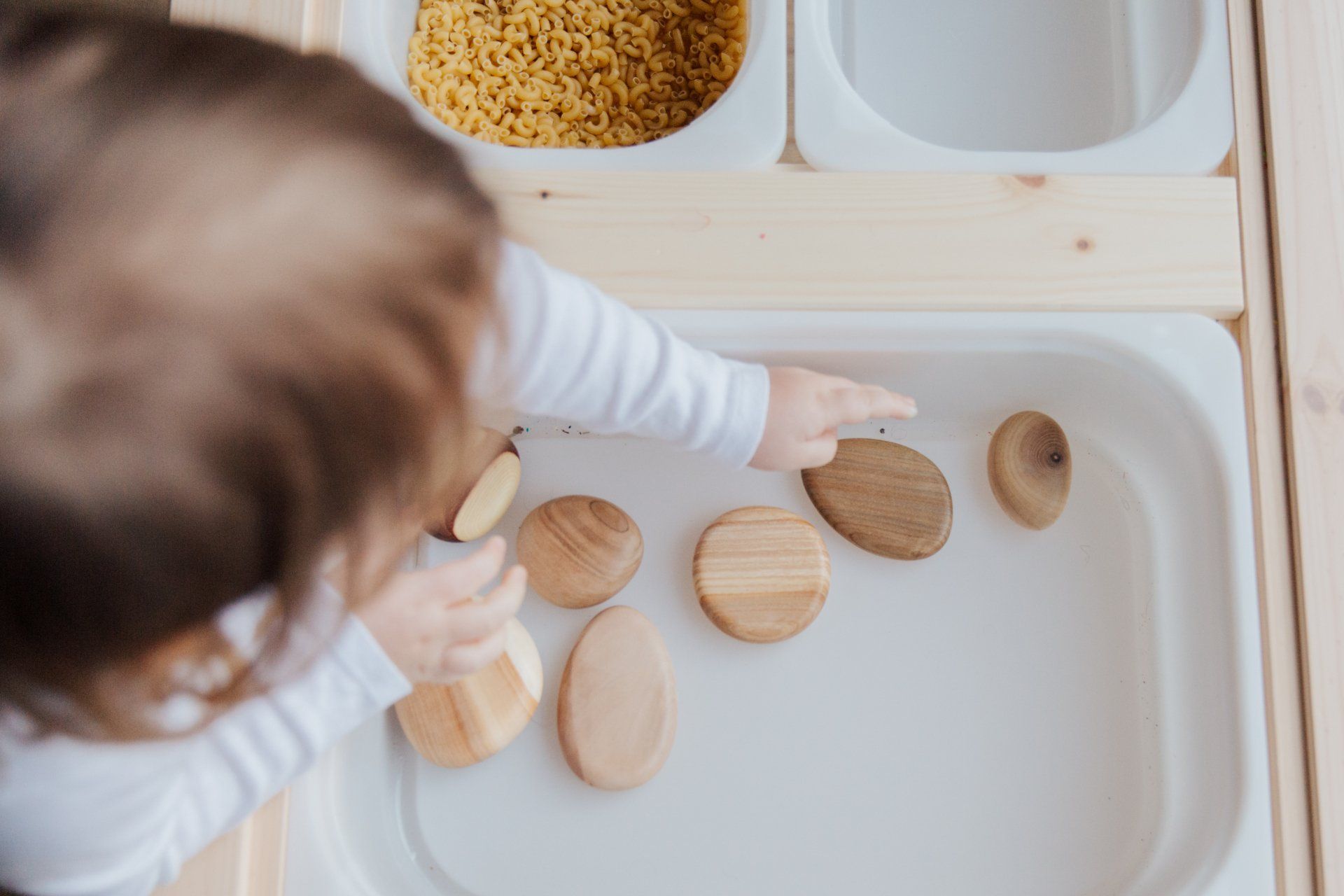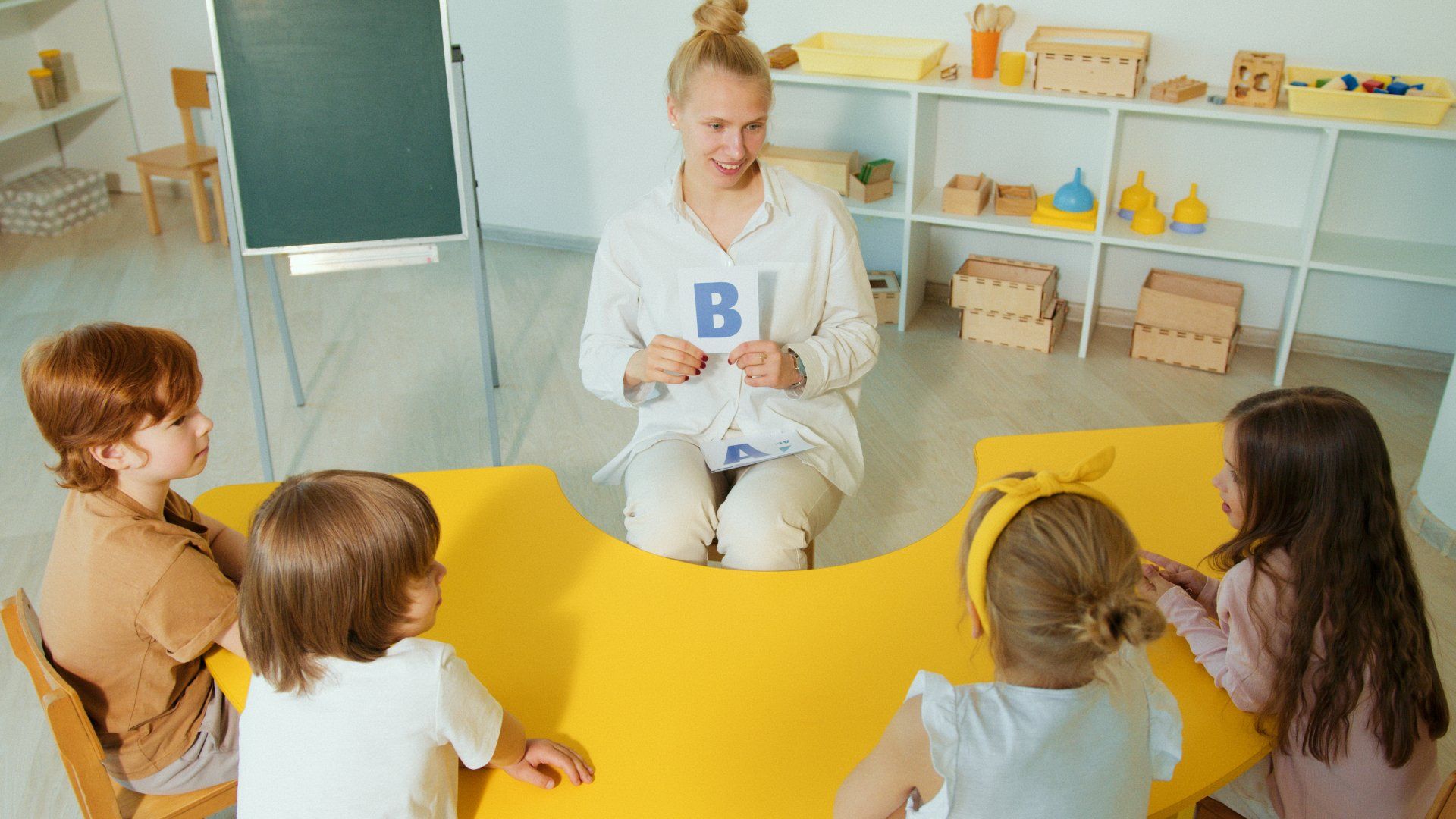Developing Fine Motor Skills: A Comprehensive Guide
Developing Fine Motor Skills: A Comprehensive Guide

Fine motor skills are essential for daily tasks such as writing, buttoning clothes, and using tools. These skills involve the small muscles in the hands, fingers, and wrists. Here's how you can help develop them effectively.
Hand Strengthening Exercises
1. Squeeze Balls:
- Activity: Squeeze stress balls or therapy putty.
- How to do it: Have children squeeze and release the ball or putty multiple times. Encourage them to use different fingers and vary the pressure.
- Benefits: Strengthens hand and finger muscles.
2. Playdough:
- Activity: Rolling, squishing, and moulding playdough.
- How to do it: Provide playdough or clay and encourage children to create shapes, letters, or figures.
- Benefits: Enhances hand strength, dexterity, and creativity.
3. Clothespin Pinching:
- Activity: Pinch clothespins and attach them to objects.
- How to do it: Use clothespins to clip onto the edges of a container, cardboard, or string.
- Benefits: Improves grip strength and precision.
Finger Dexterity Activities
1. Beading:
- Activity: Stringing beads onto a string or pipe cleaner.
- How to do it: Provide various sizes of beads and strings. Start with larger beads for beginners and progress to smaller ones.
- Benefits: Enhances fine motor control and hand-eye coordination.
2. Buttoning and Zipping:
- Activity: Practice buttoning shirts and zipping jackets or bags.
- How to do it: Use old shirts and jackets for practice. Encourage repeated practice.
- Benefits: Improves finger dexterity and self-care skills.
3. Tweezers and Tongs:
- Activity: Use tweezers or small tongs to pick up small objects.
- How to do it: Provide various objects like beads, pom-poms, or pasta to pick up and sort.
- Benefits: Enhances precision and hand-eye coordination.
Hand-Eye Coordination
1. Puzzles:
- Activity: Fit puzzle pieces into place.
- How to do it: Start with simple puzzles with large pieces and gradually introduce more complex ones.
- Benefits: Develops spatial awareness and problem-solving skills.
2. Building Blocks:
- Activity: Stack and arrange blocks to create structures.
- How to do it: Use different types of building blocks like LEGO, wooden blocks, or magnetic tiles.
- Benefits: Improves coordination, creativity, and fine motor skills.
3. Cutting with Scissors:
- Activity: Practice cutting along straight and curved lines.
- How to do it: Use child-safe scissors and paper. Start with simple lines and progress to more complex shapes.
- Benefits: Enhances hand strength and control.
Writing and Drawing
1. Colouring:
- Activity: Colouring within the lines.
- How to do it: Provide colouring books or printable colouring pages.
- Benefits: Improves control and precision.
2. Tracing:
- Activity: Trace shapes, letters, and numbers.
- How to do it: Use tracing worksheets or stencils.
- Benefits: Develops writing skills and hand-eye coordination.
3. Dot-to-Dot:
- Activity: Connect the dots to form pictures.
- How to do it: Provide dot-to-dot worksheets with varying levels of difficulty.
- Benefits: Enhances fine motor control and number recognition.
Everyday Activities
1. Cooking:
- Activity: Stir, pour, and knead dough.
- How to do it: Involve children in cooking tasks like mixing ingredients, pouring liquids, and kneading dough.
- Benefits: Develops hand strength and coordination.
2. Gardening:
- Activity: Dig, plant seeds, and water plants.
- How to do it: Provide small gardening tools and let children help with planting and watering.
- Benefits: Enhances fine motor skills and responsibility.
3. Dressing:
- Activity: Practice buttoning, zipping, and tying shoelaces.
- How to do it: Encourage self-dressing with appropriate clothing items.
- Benefits: Improves dexterity and independence.
Games and Play
1. Board Games:
- Activity: Games like chess or checkers that involve moving pieces.
- How to do it: Play board games that require strategic thinking and precise movements.
- Benefits: Enhances hand-eye coordination and cognitive skills.
2. Lacing Cards:
- Activity: Thread laces through cards with holes.
- How to do it: Provide lacing cards or create your own using cardboard and a hole punch.
- Benefits: Improves fine motor control and concentration.
3. Video Games:
- Activity: Certain video games can improve hand-eye coordination (use in moderation).
- How to do it: Choose games that require precise movements and timing.
- Benefits: Enhances coordination and reaction time.
Technology Aids
1. Apps and Online Games:
- Activity: Educational apps focusing on tracing, drawing, and fine motor activities.
- How to do it: Use apps like LetterSchool, Dexteria, or drawing apps on tablets.
- Benefits: Provides engaging and interactive ways to develop fine motor skills.
2. Touchscreen Devices:
- Activity: Drawing and tracing on tablets or smartphones.
- How to do it: Use styluses or fingers to draw and trace on touchscreens.
- Benefits: Improves precision and control.
Activities by Age Group
For Toddlers (1-3 years):
- Stack Cups or Blocks: Enhances hand-eye coordination and spatial awareness.
- Simple Puzzles: Develops problem-solving skills.
- Finger Painting: Improves creativity and sensory experiences.
For Preschoolers (3-5 years):
- Cutting Simple Shapes: Enhances hand strength and control.
- Playing with Playdough: Develops hand muscles and creativity.
- Stringing Large Beads: Improves fine motor control and hand-eye coordination.
For School-Age Children (5-7 years):
- Writing Letters and Numbers:** Develops writing skills and fine motor control.
- More Complex Puzzles: Enhances problem-solving and spatial awareness.
- **Drawing and Coloring Detailed Pictures:** Improves precision and creativity.
Creating a Fine Motor Skills Routine
1. Warm-Up:
- Start with simple hand stretches and finger exercises.
- Example: Stretch fingers wide, make a fist, and release.
2. Activity Time:
- Engage in 10-15 minutes of targeted fine motor activities.
- Example: String beads, cut shapes, or use tweezers to sort small objects.
3. Skill Application:
- Incorporate fine motor tasks into daily routines like dressing and eating.
- Example: Encourage self-dressing and using utensils independently.
4. Cool Down:
- Finish with relaxing hand and finger stretches.
- Example: Gently massage fingers and hands to relax muscles.
Monitoring Progress
Set Goals:
- Identify specific skills to improve and set achievable goals.
- Example: Improve buttoning skills within a month.
Track Activities:
- Keep a log of activities and progress to identify areas of improvement.
- Example: Note how many beads were strung or how accurately shapes were cut.
Adjust Activities:
- Increase the complexity of activities as skills improve.
- Example: Progress from large beads to smaller beads, or from straight lines to complex shapes in cutting.
Professional Guidance
Occupational Therapy:
- Seek an occupational therapist for specialised activities and strategies if significant difficulties are present.
- Example: An OT can provide tailored exercises and tools to target specific motor skill issues.
Regular Assessments:
- Regularly assess progress and adjust activities accordingly.
- Example: Re-evaluate every few weeks to ensure the child is progressing and adjust activities to keep them challenging.
By incorporating these detailed activities into daily routines, children can gradually improve their dexterity, coordination, and hand strength. This will lead to better performance in daily tasks and overall development.
GLOBAL KIDS DAY CARE LIMEHOUSE
Lascar Wharf Community Centre, Limehouse, London, E14 7FN. | Tel: 0207 001 1210 Email: limehouse@globalkidsdaycare.co.uk
GLOBAL KIDS DAY CARE MILE END
21 Burdett Road, Mile End, London, E3 4TU. | Tel: 0208 980 1706 Email: mile-end@globalkidsdaycare.co.uk
GLOBAL KIDS DAY CARE ALDGATE EAST
52 Old Castle Street, Aldgate East, London E1 7AJ. | Tel: 0203 302 7800 / Mobile: 07823 770035 | Email: aldgateeast@globalkidsdaycare.co.uk
Opening Times: 8am - 6pm

















